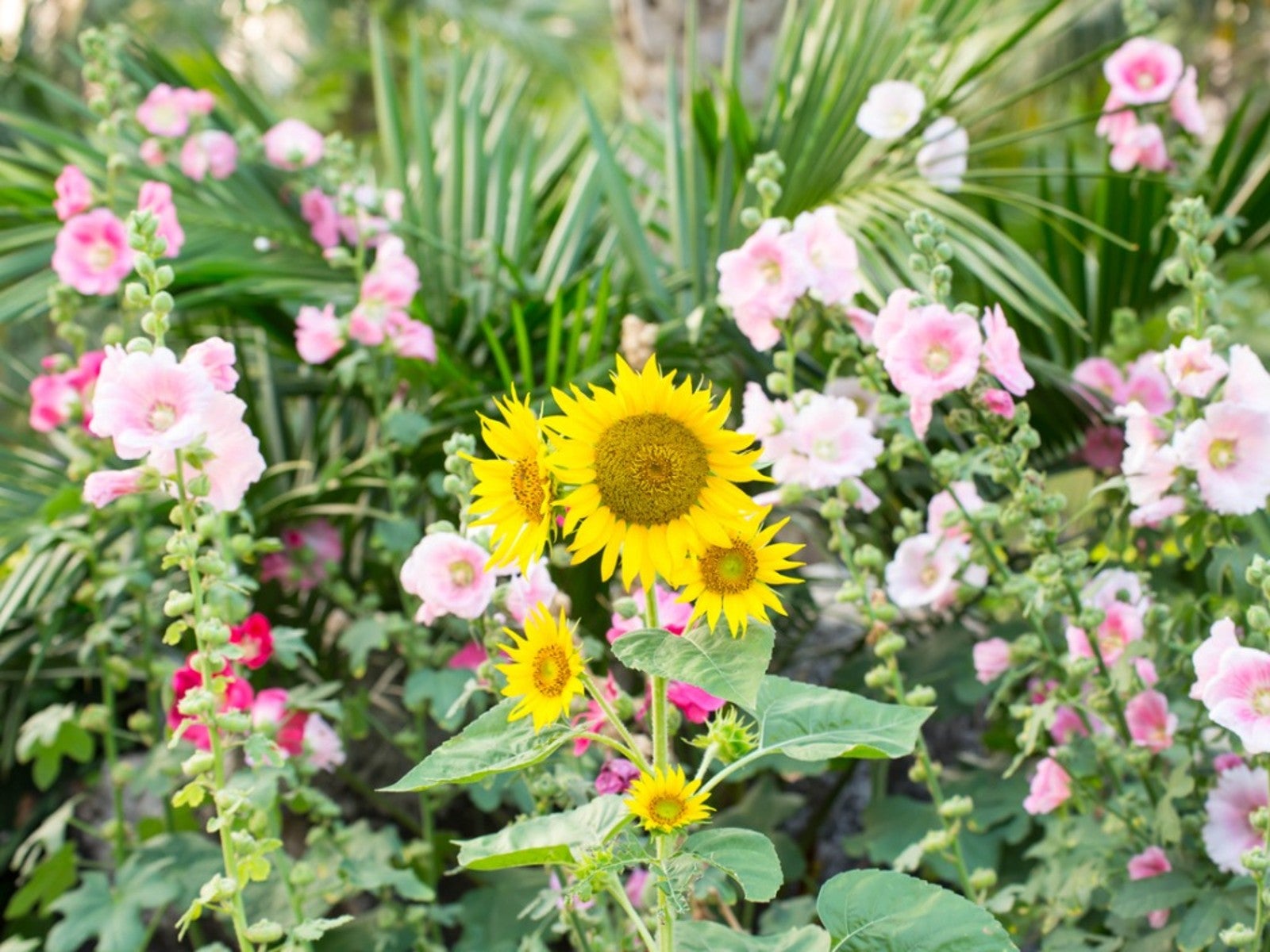Companion Planting With Sunflowers


Companion plants are popular for their insect repelling properties, but also as support for other wanted plants. Sunflowers are classic flowers whose statuesque height and cheery blooms decorate the landscape with charm. Sunflower companion plants run the gamut from vegetables to flowers, with the capacity for both structural support and pest resistance.
Sunflower Companions
Many gardeners have heard of the Three Sisters planting system. It is an ancient practice that native people used for centuries. When the majestic sunflower is added to the trio, the Four Sisters have even more power in the garden. The classic sunflower companions in the Three Sisters are beans, corn, and squash. These pair beautifully with sunflowers, both visually and as a beneficial grouping. The companion planting sunflower is a hard working specimen that is a valuable support for scrambling vines and towering stalks.
Growing Sunflowers
Most of our tall varieties of sunflower are annuals, but they reseed with wind and bird activity, and will reliably come up every year in the same site. Leave the flower heads on to dry. Once all the petals have fallen, the entire head may be harvested or left on to feed birds in winter. Sunflowers grow in almost any soil but do not like to be in overly wet situations. They are tolerant of drought, and the dried heads and stalks can be used in a fireplace or fire pit as an excellent fire starter.
Types of Flowering Companion Plant for Sunflowers
Flowers bring beauty into our landscapes but may also have pest repellent properties. When certain blooms are planted around sunflowers they can keep away bad bugs and encourage pollinators and good predatory insects. These plants must share the same cultural conditions as the sunflowers. Full sun, well draining soil, and average water are a must. Ideally the flowering plants should be as stoic as the sunflowers, needing very little extra care outside of occasional watering. Some blooming plants that share these site requirements are:
Many of our native prairie flowers can take part in companion planting with sunflowers. Wild flowers will further encourage pollinators and are often excellent habitat for wildlife, as well as providing food. As an added bonus, wildflowers are adapted to the region and are self sufficient.
The Four Sisters
Sunflower and corn planting in concert create a wind breaking, supportive screen. In high wind areas, young corn stalks can blow down, but inter-planting sunflowers among the corn will reinforce and shield the vegetables. The flowers will also encourage pollinators necessary for the formation of sweet corn ears. Interestingly, the sunflowers will also give birds something distracting to eat so they will leave forming corn alone.
Sunflowers take up a lot of nitrogen from the soil which needs to be replenished. When beans are added to the mix, they return nitrogen to the soil, bringing balance to the health of the earth. Squash vines can scramble over smaller varieties of sunflower, which keeps them off the ground and raises the blooms up to the sun. In the end, there will still be sunflower seeds to harvest, but better yields on the vegetables.
Gardening tips, videos, info and more delivered right to your inbox!
Sign up for the Gardening Know How newsletter today and receive a free copy of our e-book "How to Grow Delicious Tomatoes".

Bonnie Grant is a professional landscaper with a Certification in Urban Gardening. She has been gardening and writing for 15 years. A former professional chef, she has a passion for edible landscaping.
-
 Looking For Plants To Give You The Soft And Fuzzies? Try These 5 Fuzzy Leaf Plant Options
Looking For Plants To Give You The Soft And Fuzzies? Try These 5 Fuzzy Leaf Plant OptionsLovers of texture, drama, silver foliage and tactile plants will adore these special sensory garden additions. These fuzzy leaf plant options will leave you all aglow
By Susan Albert
-
 Get Ready For A Summer Of Hummers! Grow These Full Sun Hummingbird Plants and Flowers
Get Ready For A Summer Of Hummers! Grow These Full Sun Hummingbird Plants and FlowersIf you’re lucky enough to enjoy a sunny backyard, make sure you are maxing out on your pollinator opportunities and grow these full sun hummingbird plants and flowers
By Tonya Barnett